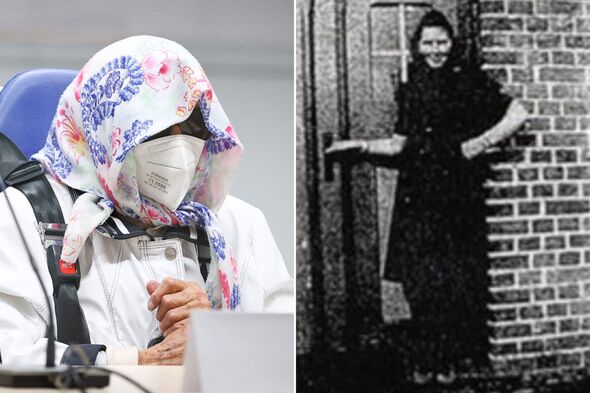A 99-year-old woman found guilty of being an accessory in the murders of more than 10,000 people at a Nazi concentration camp during World War II has lost an appeal against her conviction.
Germany’s Federal Court of Justice upheld the verdict about Irmgard Furchner, handed a two-year suspended sentence in December 2022 by a state court in Itzehoe in northern Germany.
Furchner was accused of being part of the apparatus that helped the camp, Stutthof, near Danzig, now the Polish city of Gdansk, function. She was convicted of being an accessory to murder in 10,505 cases and an accessory to attempted murder in five cases.
At a federal court hearing in Leipzig last month, Furchner’s lawyers cast doubt on whether she was genuinely aware of what was going on at Stutthof, specifically the crimes being committed by its commander and other senior camp officials.
The Itzehoe court said judges were convinced that Furchner “knew and, through her work as a stenographer in the commandant’s office of the Stutthof concentration camp from June 1, 1943, to April 1, 1945, deliberately supported the fact that 10,505 prisoners were cruelly killed by gassings, by hostile conditions in the camp,” by transportation to the Auschwitz death camp and by being sent on death marches at the end of the war.
Prosecutors said during the original proceedings that Furchner’s trial may be the last of its kind. However, a special federal prosecutors’ office in Ludwigsburg tasked with investigating Nazi-era war crimes says three more cases were pending with prosecutors or courts in various parts of Germany. With any suspects now at a very advanced age, questions are increasingly arising over their fitness to stand trial.
Furchner’s case is one of several in recent years which build on a precedent established in 2011 with the conviction of former Ohio autoworker John Demjanjuk as an accessory to murder based on allegations that he served as a guard at the Sobibor death camp. Demjanjuk, who denied the allegations, died before his appeal could be heard.
German courts previously required prosecutors to justify charges by presenting evidence of a former guard’s participation in a specific killing, frequently an almost impossible task.
However, during Demjanjuk’s trial in Munich, prosecutors successfully argued that helping a camp function was sufficient reason to convict someone as an accessory to murders committed there.
A federal court subsequently upheld the 2015 conviction of former Auschwitz guard Oskar Groening on the same reasoning.
Furchner was tried in juvenile court because she was 18 and 19 at the time of the alleged crimes, and the court could not establish beyond a doubt her “maturity of mind” then.
Initially a collection point for Jews and non-Jewish Poles removed from Danzig, Stutthof was later used as a “work education camp” where forced labourers, primarily Polish and Soviet citizens, were sent to serve sentences and often died.
From mid-1944, tens of thousands of Jews from ghettos in the Baltics and from Auschwitz filled the camp, along with thousands of Polish civilians swept up in the brutal Nazi suppression of the Warsaw Uprising.
Others incarcerated there included political prisoners, accused criminals, people suspected of homosexual activity and Jehovah’s Witnesses. In total, more than 60,000 people were killed at the camp.
